| |
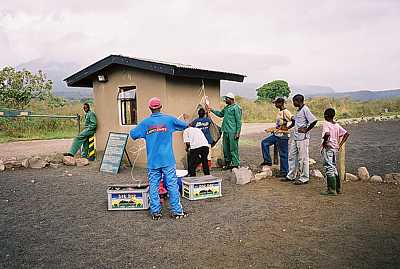 |
At the main entrance
of Arusha National Park the luggage is weight and the mandatory number
of porters is fixed.
Extensive sets of forms are be filled out.
Certainly independent walkers are allowed to climb the mountain
without engaging porters. But is obligatory to be accompanied by an
armed ranger who also works as your guide.
The weapon is necessary because it is not rare to come across buffalos
and elephants. |
| |
|
|
| |
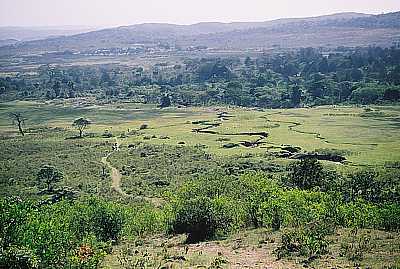 |
The climb starts at
the side entrance "Momella Gate".
The photo shows the view back to the first part of the tour. Crossing
the plain we could already watch giraffes and buffalos.
At the office at Momella Gate you can buy a very nice map of the
National Park, including a detailed description of the climbing route. |
| |
|
|
| |
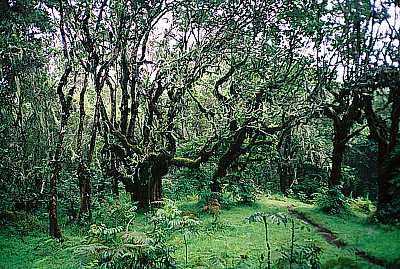 |
Soon we enter the
laurel mountain wood
and gaze at the opulent growth. |
| |
|
|
| |
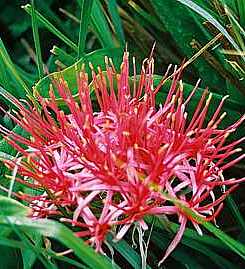
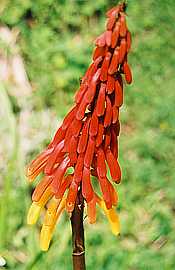 |
left: Fireball.
(Scadoxus multiflorus)
right:
Red hot Poker.
(Kniphofia thomsonii) |
| |
|
|
| |
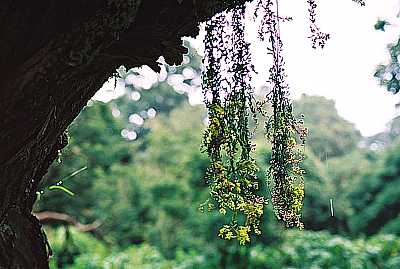 |
Trees are covered by
tresses.
Most intensive rain falls between March and June and between November
and December. The laurel wood also benefits by the persistent fog
banks in the height of 2000-2700 meters. |
| |
|
|
| |
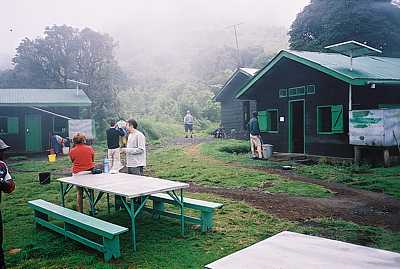 |
The group of buildings
called Miriakamba Hut (2514m) are reached after 4 hours when walking
slowly. Due to the continous heavy rain we rushed there within 2
hours.
The huts provide rooms with 4 camp beds each, including mattresses.
All rooms and the lounge have electric light. Bottles of beer and soft
drinks are offered.
From Miriakamba Hut you can do a short trip to the ground of the
crater. But don't try it on your own. For a small tip your guide will
be happy to guard you on the way. |
| |
|
|
| |
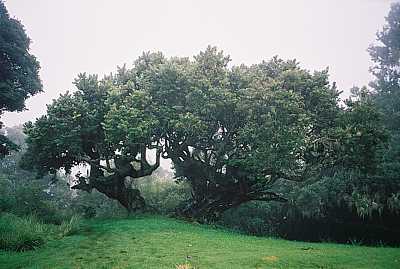 |
On Mount Meru the
weather is not as reliable as on Kilimanjaro.
We met walkers coming down who had to turn back early in the night on
their way to the top. It was raining heavily, with snow on the higher
areas. And this happened outside the main rainy season. We were there
at beginning of February. |
| |
|
|
| |
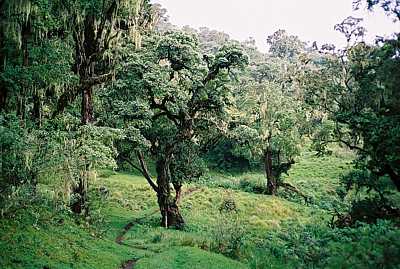 |
On our way we had to
overcome a real adventure. 3 elephants were obstructing our route. For
our safety Peter, our guide, told us to climb a tree. Then he went
towards the elephants and shot into the air. In vain. Only after a
second shot the elephants moved on and we could come down from our
airy seats. It was really impressing how the elephants made their way,
breaking big aisles right into the dense rainy forest.
|
| |
|
|
| |
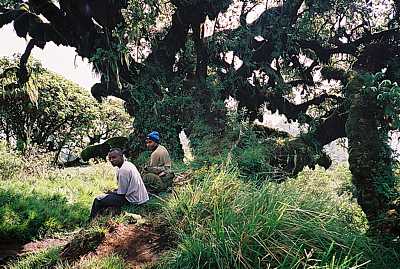 |
A rest in the shadow.
To the right ranger Peter, at the left my private "servant" Salutari. I
booked the trip at Hotel Dikdik. They have certain standards. I
got my own hotel cook, a waiter and a personal porter.
Then there was the mandatory armed ranger and further four independant
porters.
I didn't notice it at the start. There were 8 people to get me up that
hill! |
| |
|
|
| |
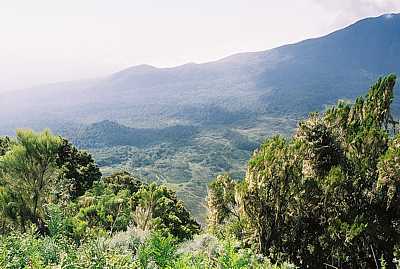 |
An aerial view down to
the ground of the crater.
At half way up between Miriakamba Hut and Saddle Hut a viewpoint
invites the walker to stay for a while.
Given its figure the viewpoint is called "Mgongo ya Tembo",
the elephant's back (3200m) . |
| |
|
|
| |
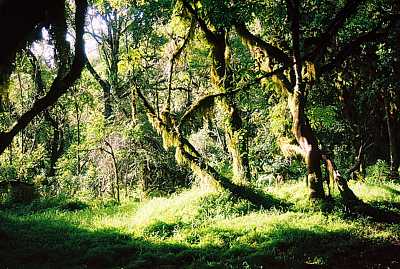 |
Many little birds can
be spotted in the trees. Different kinds of warblers, I guess.
All over the place traces of buffalos and elephants can be seen. We
come across bushbucks. |
| |
|
|
| |
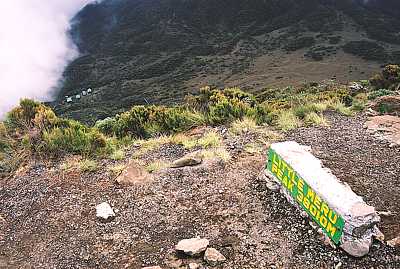 |
The side top Little
Meru can be reached from Saddle Hut within 30 minutes (the photo shows
the small group of houses to the left).
Those who find the climb to the main top too ardous might be very
happy walking up Little Meru. The sunrise is as beautiful as from the
top, and a special certificate is your reward. |
| |
|
|
| |
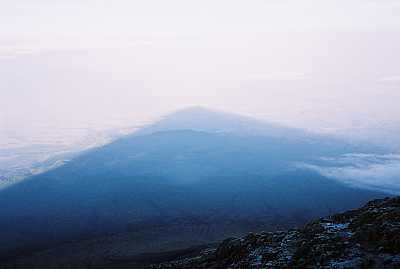 |
Everybody wants to be
at the top at sunrise. Therefore some get up already at 1am, most
start at 2am. The usual walking time from Saddle Hut to the top is 5
hours.
My guide Peter knew my speed meanwhile and he accepted the start at
4.30am.
Plodding the final meters to the top we could see the mile-long shadow
of our mountain.
|
| |
|
|
| |
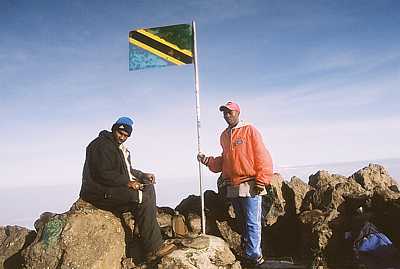 |
We arrived at 7.20am.
My tutors looked with proud at their country's flag. Peter signed the
book at the peak, mentioning are record time of ascend. "Strong man of Germany"
they called me what made me smiling. However, Peter still found time
enough to smoke his cigarette on the way up. |
| |
|
|
| |
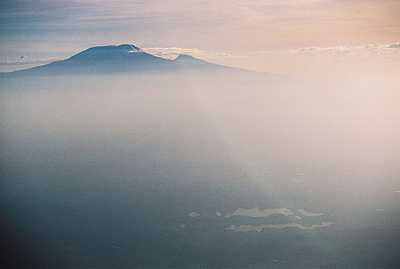 |
I am not sure about
the exact distance to Kilimanjaro, it should be about 40 miles.
To the right of the main volcano Kibo, the side peak Mawenzi can be
seen.
At the bottom the Momella Lakes lie in the back light. |
| |
|
|
| |
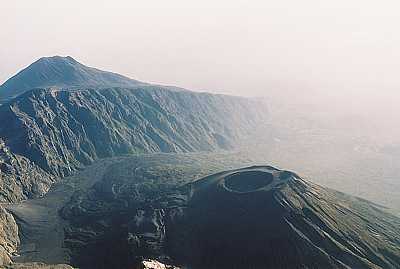 |
Looking down to the
secondary inner crater, to its left the flow of Lava, which was moving
until 1910.
Little Meru in the background.
To be at the top early in the morning is advisable because until
midday clouds usually gather around the top. |
| |
|
|
| |
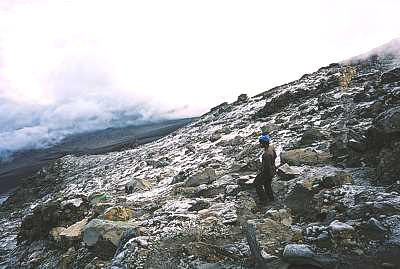 |
Even when walking back
the glazed frost is not yet melted. During night we had to be careful
scrambling over some frozen areas. |
| |
|
|
| |
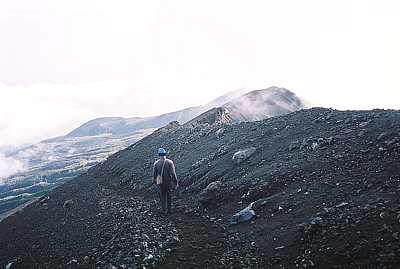 |
Views from the
crater's rim go in all directions and are breathtaking. |
| |
|
|
| |
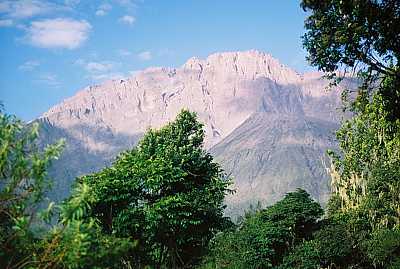 |
At the following
morning we proudly look back to our peak. We have been up there. |




















